Nothofagus antarctica (Nothofagaceae), Ñire (ES)
Tree with many small leaves. On some trees the edge of the leave is more curved than on other ones. (Pers. Obs.).
Picture taken: Next to Rio Hielo, Corcovado, Northern Patagonia.
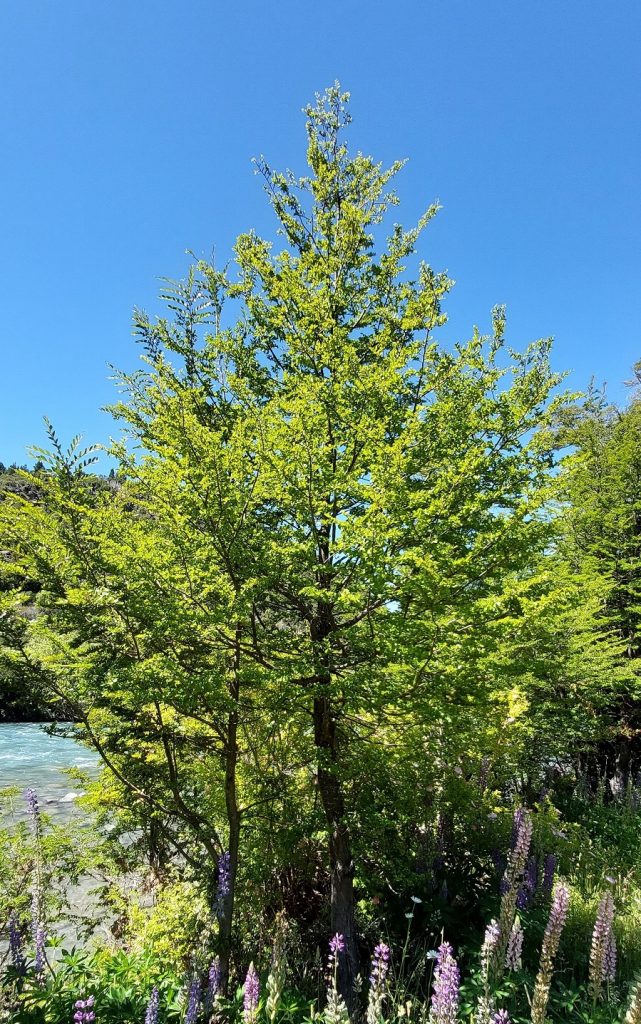
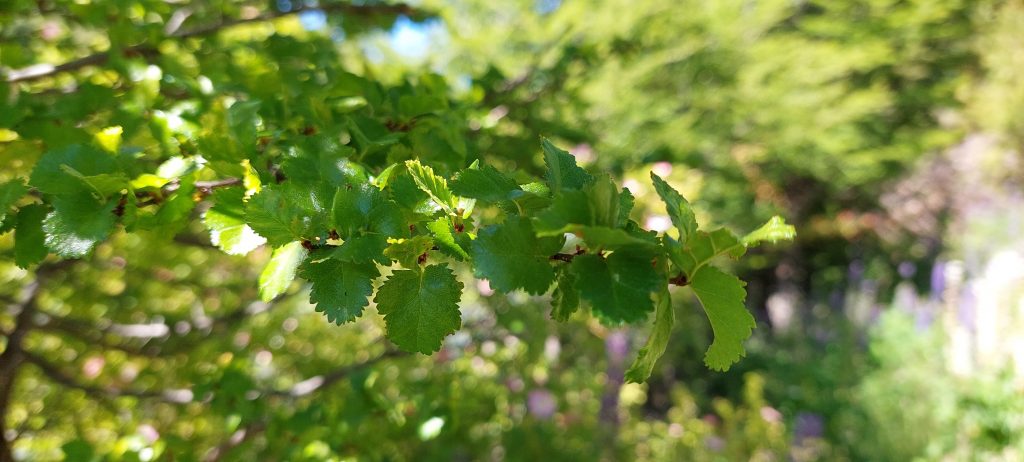
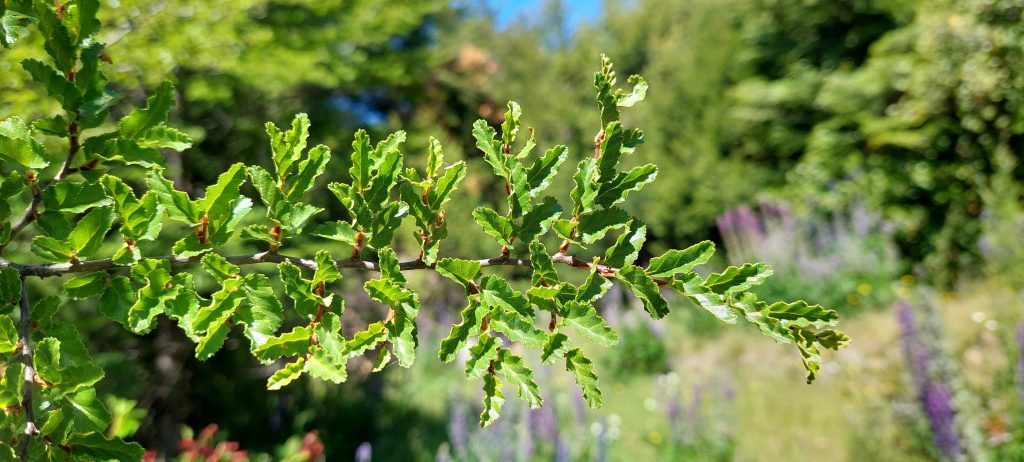
Ochetophila trinervis (Rhamnaceae), Chacay (ES)
Plant with lots of long, solid spines. In blossom they have small yellow flowers.
Picture taken: Next to Rio Hielo, Corcovado, Northern Patagonia.
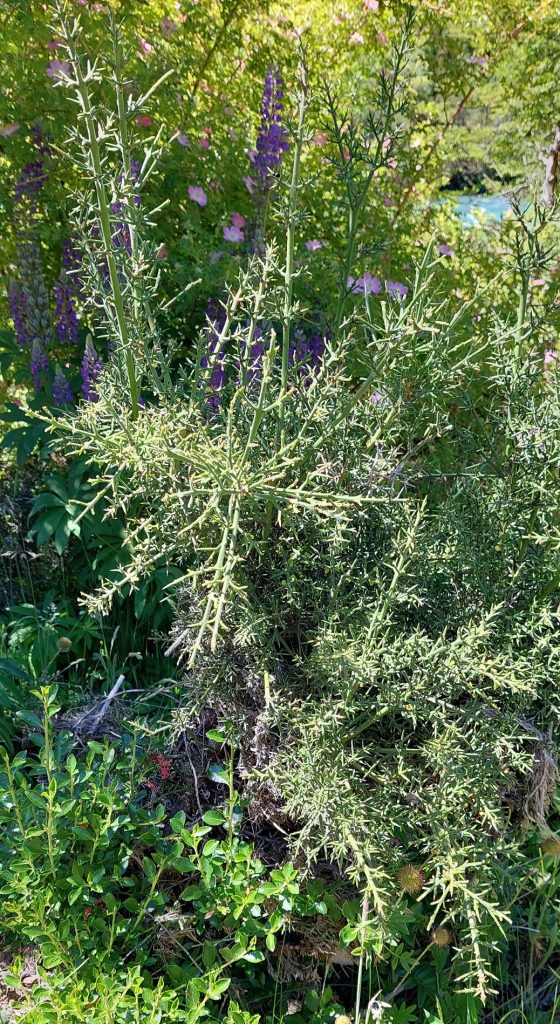
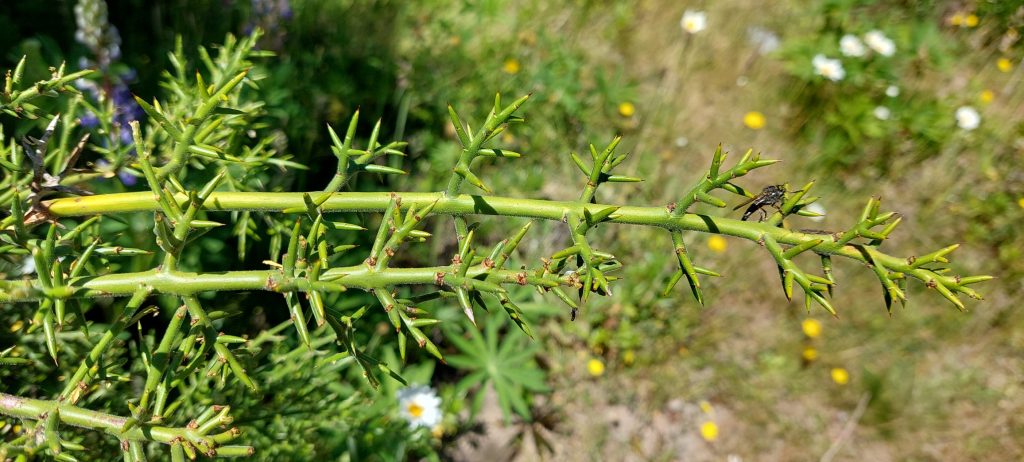
Fitzroya cupressoides (Cupressaceae), Alerce (ES)
According to local persons there is an extremely old and giant Alerce in the park (2500 years old) but I did not visit this place.
“Fitzroya is a monotypic genus in the cypress family. The single living species, Fitzroya cupressoides, is a tall, long-lived conifer native to the Andes mountains and coastal regions of southern Chile, and only to the Argentine Andes, where it is an important member of the Valdivian temperate forests.” (Wikipedia)
Picture taken: In National Park “Los Alerces”, Trevelin, Northern Patagonia.
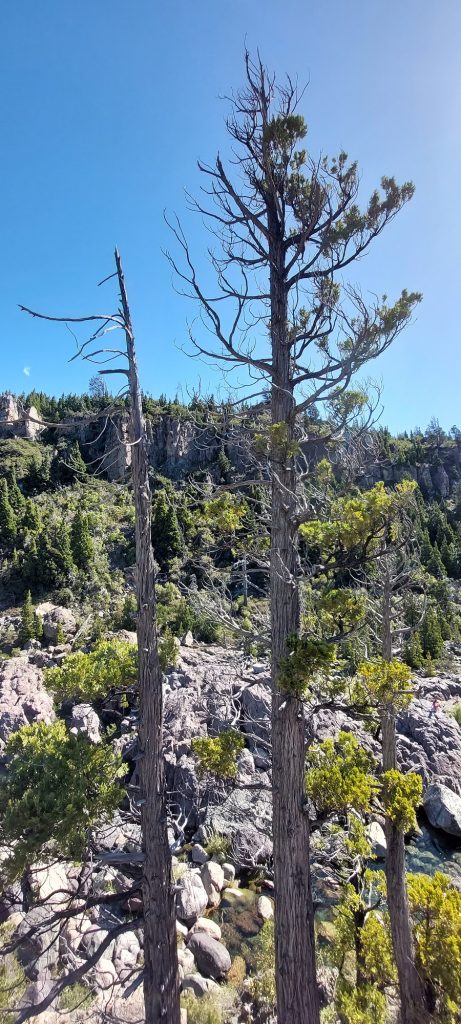
Austrocedrus chilensis (Cupressaceae), Ciprés (ES)
They are very common and can grow to a very big tree (Pers. Obs.)
Picture taken: Next to Rio Hielo, Corcovado, Northern Patagonia.
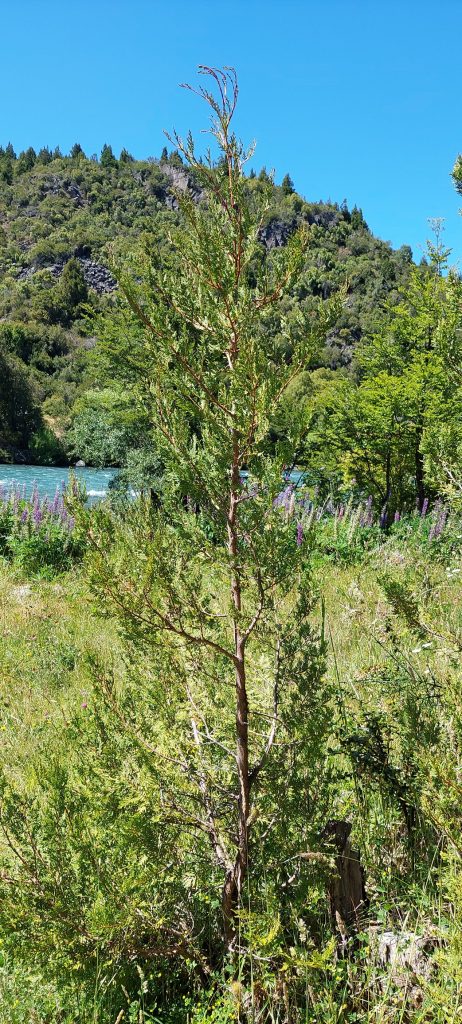
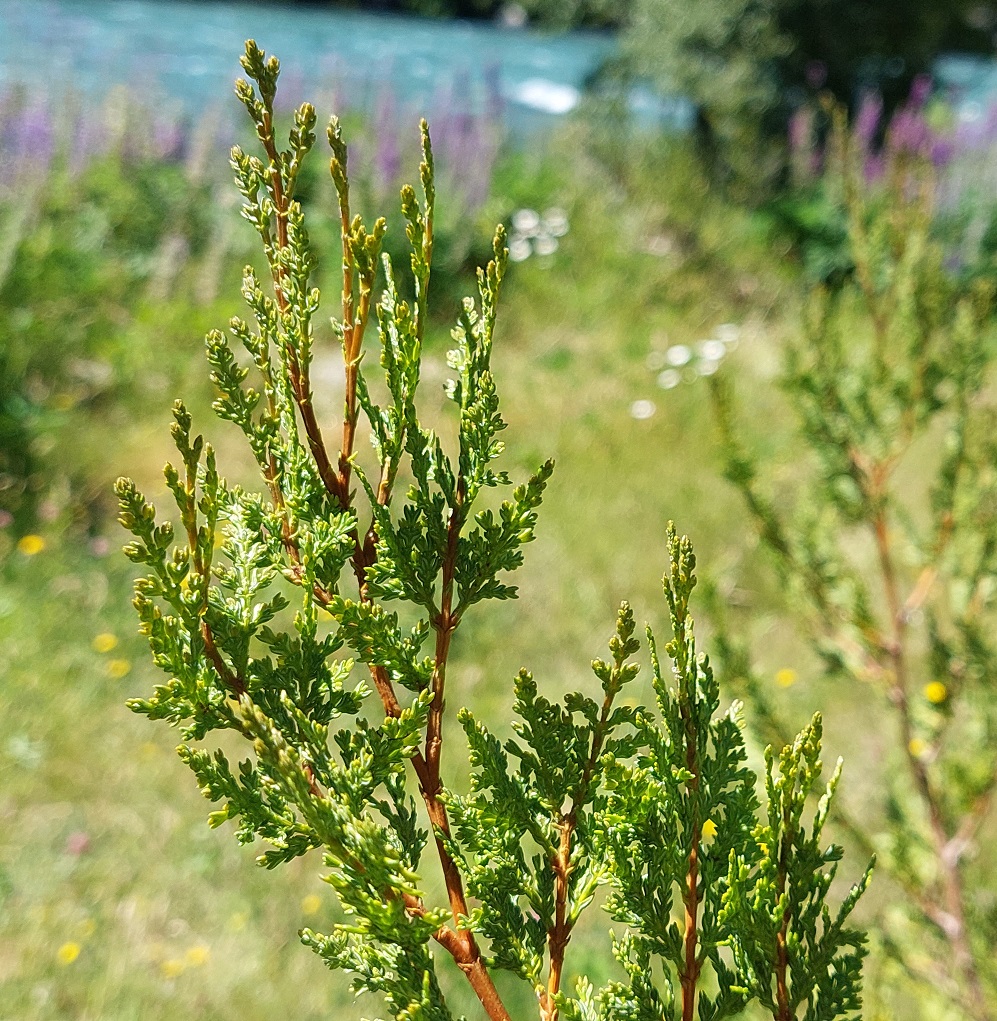
Rosa eglanteria (Rosaceae), Rosa Mosqueta (ES)
An invasive species, coming from Europe (Fredy, local man) which is extremely abundant (Pers. Obs.)
Picture taken: Next to Rio Hielo, Corcovado, Northern Patagonia.
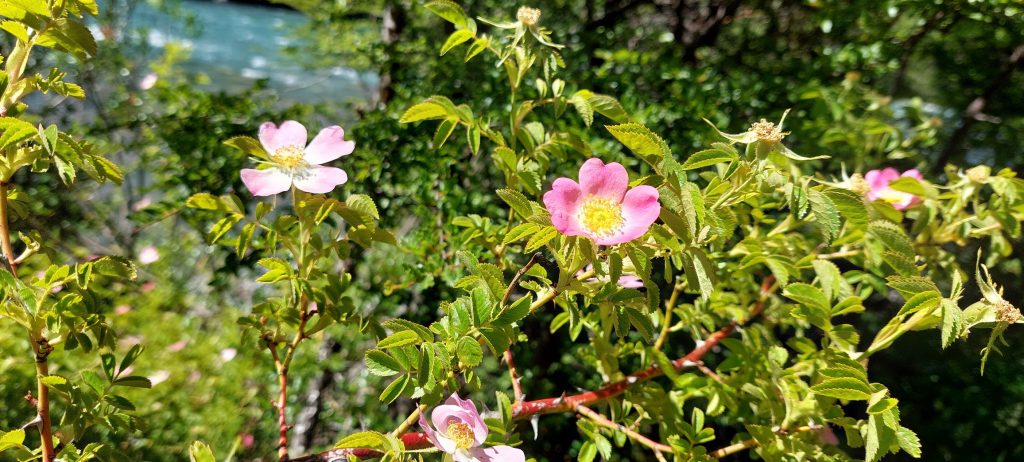
Berberis microphylla (Berberidaceae), Calafate (ES)
Picture taken: Next to Rio Hielo, Corcovado, Northern Patagonia.
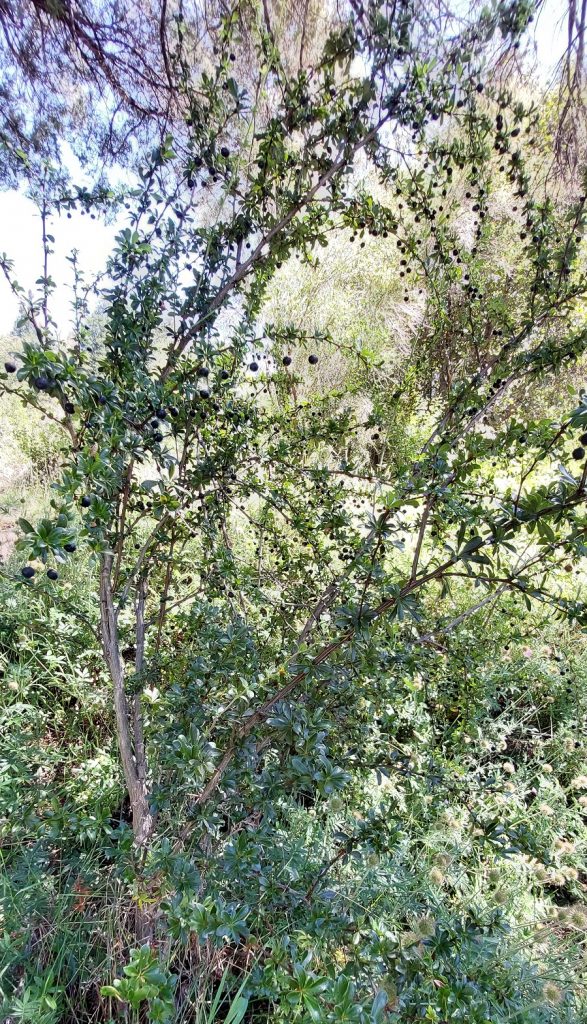
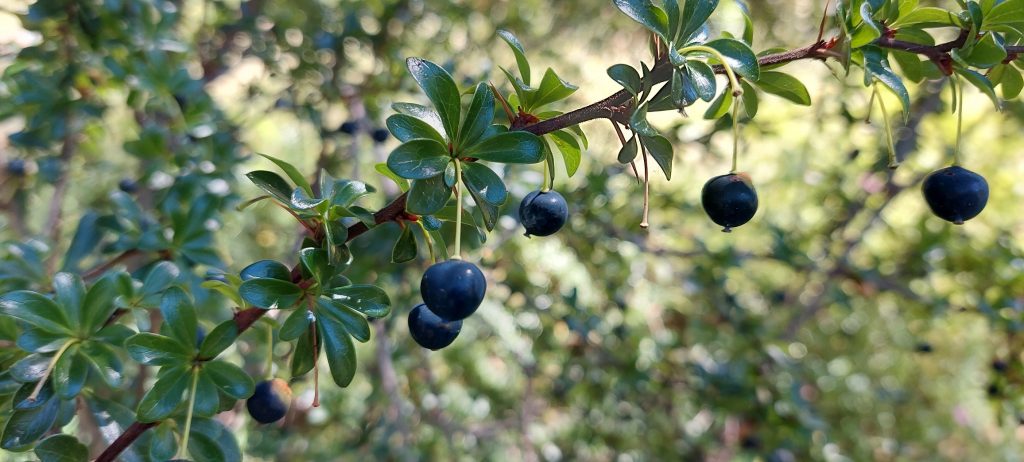
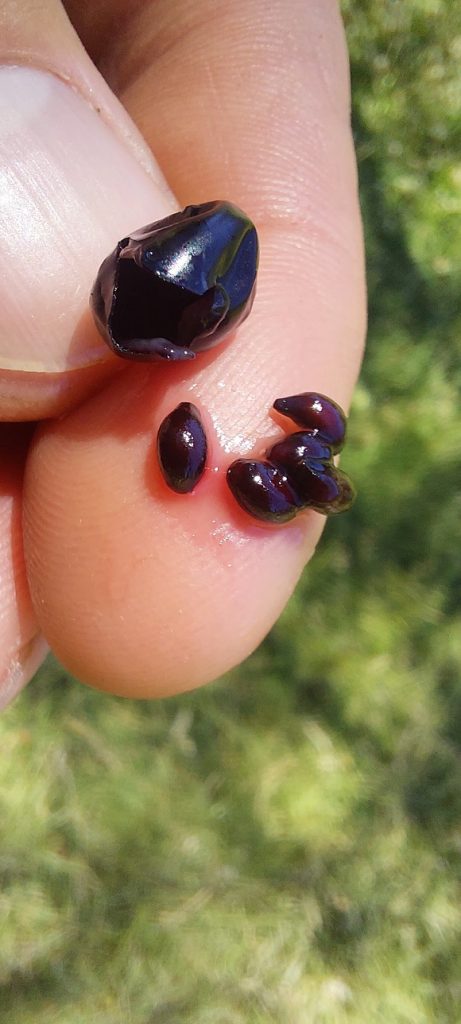
Retama sphaerocarpa (Fabaceae), Retama Amarilla (ES)
Retama branches are used a lot to start a fire when they are dry but they can also inflame very quickly in nature and cause bush fires (Fredy, local man). According to Wikipedia, it is an invasive species coming from Europe (Wikipedia). It is very common on the side of roads and rivers and actually very beautiful with its yellow flowers while in blossom (Pers. Obs.)
Picture taken: Next to Rio Hielo, Corcovado, Northern Patagonia.
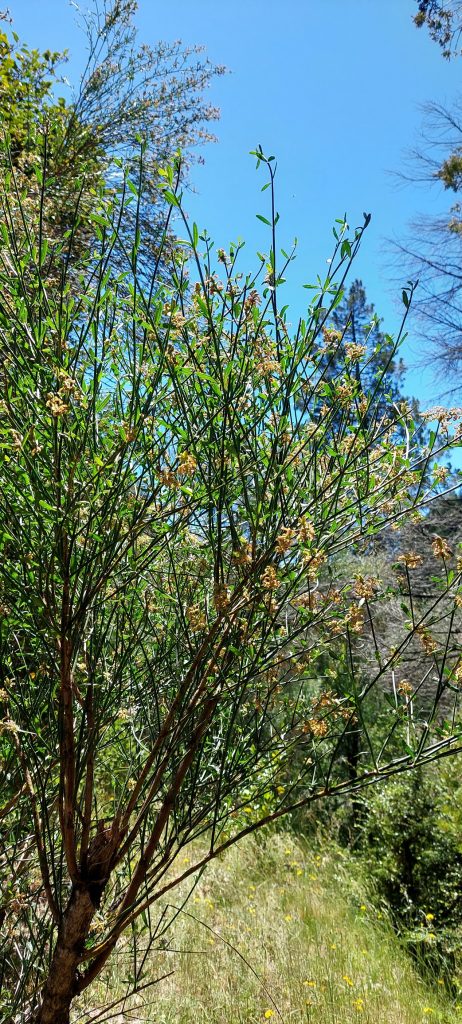
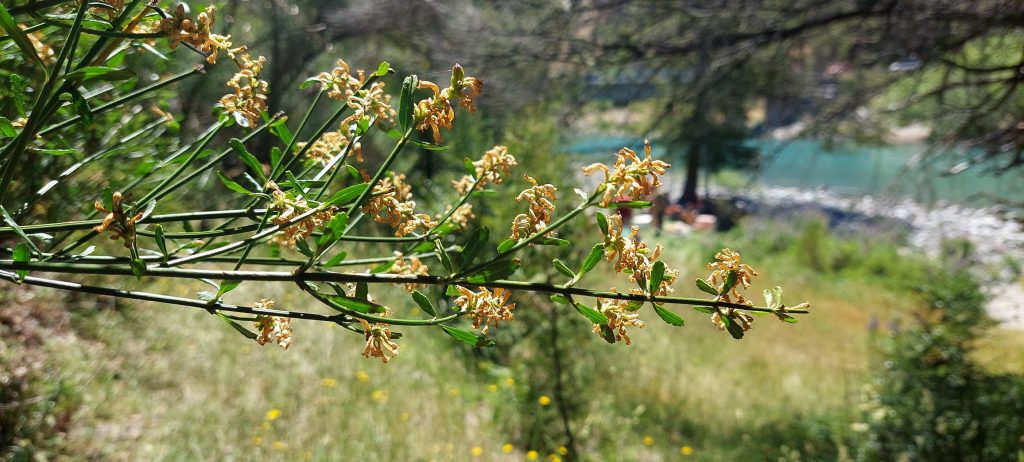
Lomatia hirsuta (Proteaceae), Radal (ES)
Radal is a very massive wood that is taken a lot to fabricate furniture such as tables but also cutting boards (Rodrigo, local man).
Picture taken: Next to Rio Hielo, Corcovado, Northern Patagonia.
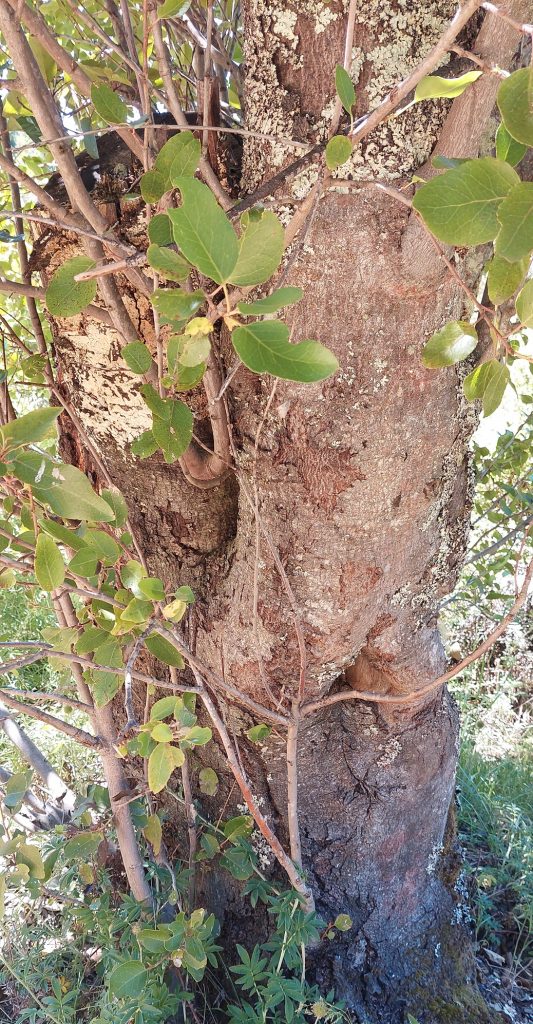
Nothofagus betuloides (Nothofagaceae), Coihué (ES)
Coihué is a very massive tree that is quite common in Patagonia. I already saw these trees on the way down to Patagonia and in the Botanical Garden of the University Austral de Chile in Valdivia. They have many very small leaves. (Pers. Obs.)
Picture taken: Next to Rio Hielo, Corcovado, Northern Patagonia.
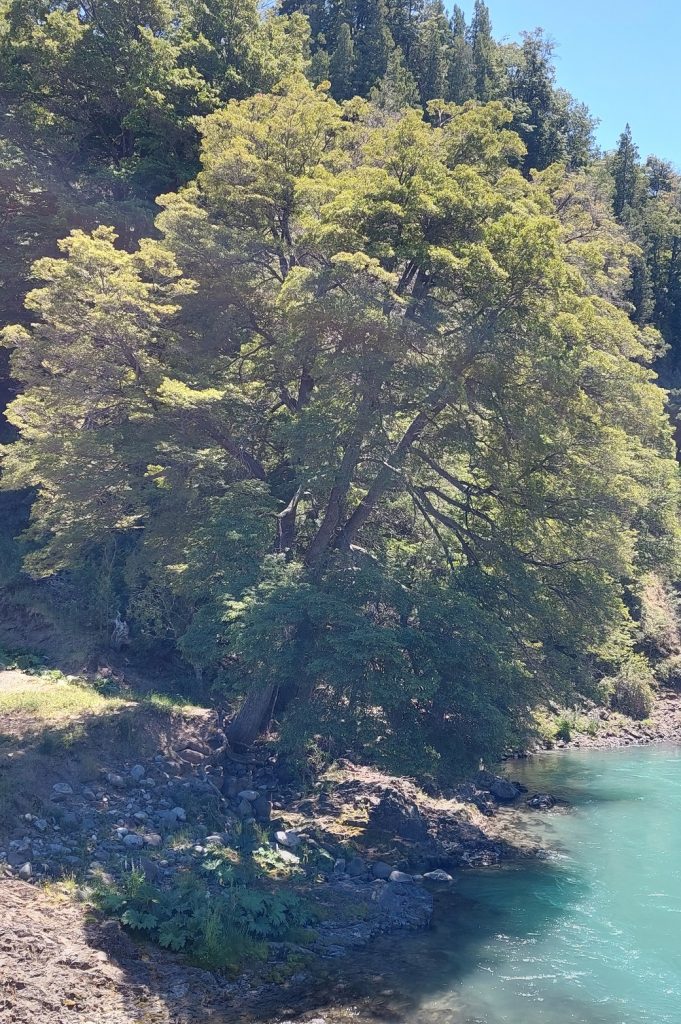
Gunnera tinctoria (Gunneraceae), Nalca (ES)
Nalca is probably the plant with the largest leaves I’ve ever seen. Some of their leaves have the size of 3-4 square meters and could easily cover my bicycle. They grow all over the place (from Santiago down into Patagonia) but vary in size. The largest ones I observed in Tepuhueico Park on the Chiloé Island (Pers. Obs.). The stem contains medium sized spines but can be pealed and eaten raw with a bit of salt (local man), however only when they appear brown and are soft enough. The nalcas I saw near Corcovado (AR) were smaller. According to Fredy they are a subspecies and therefore a bit different (Fredy, local man).
Picture taken:
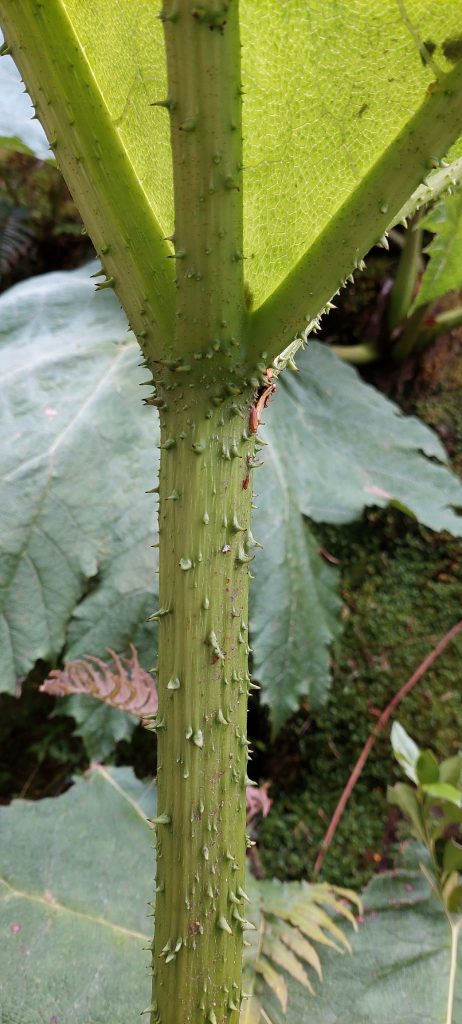
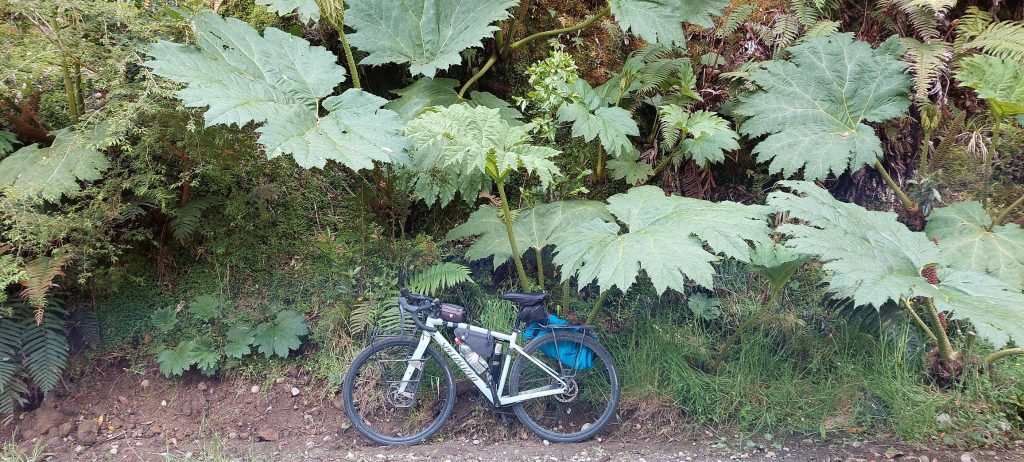
Populus nigra (Salicaceae), Álamo Negro (ES)
I have observed this species now and then. Not extremely frequent, mostly alone standing, but sometimes they gather in small groups. (Pers. Obs.). After Fredy it’s an invasive species coming from Europe and according to Wikipedie he was right (Wikipedia).
Picture taken: Corcovado area, Northern Patagonia.
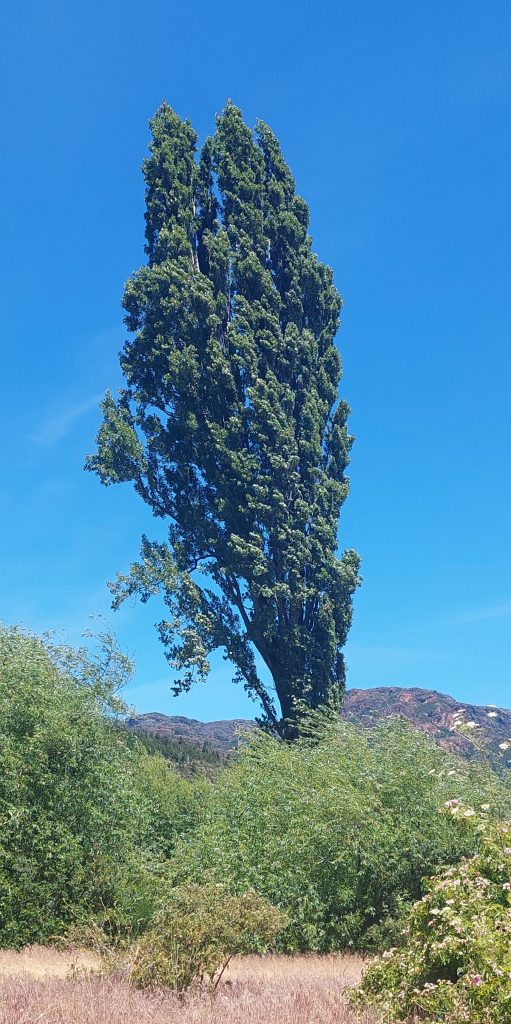
Nothofagus betuloides (Nothofagaceae), Coihué (ES)
Coihué is a very massive tree that is quite common in Patagonia. I already saw these trees on the way down to Patagonia and in the Botanical Garden of the University Austral de Chile in Valdivia. They have many very small leaves. (Pers. Obs.)
Picture taken: Next to Rio Hielo, Corcovado, Northern Patagonia.
